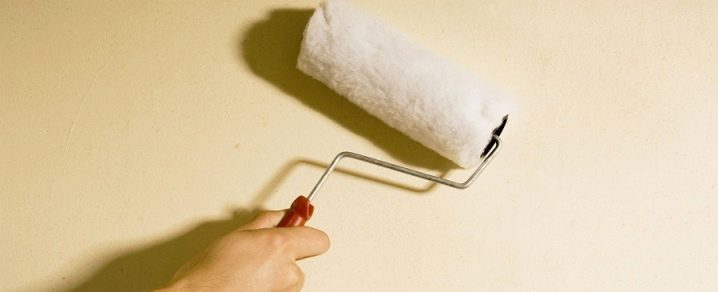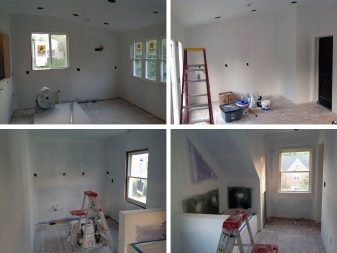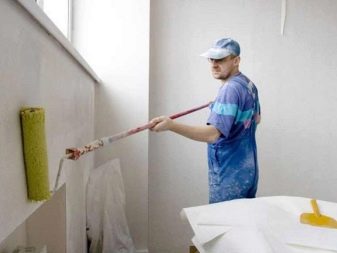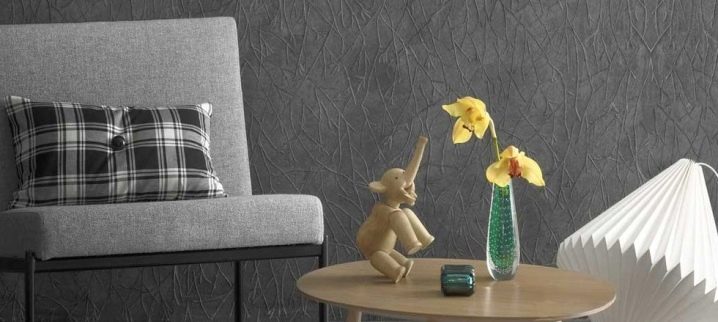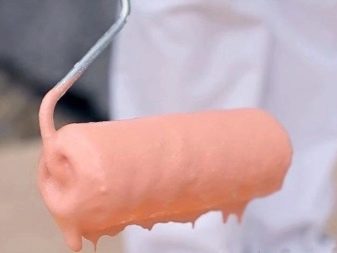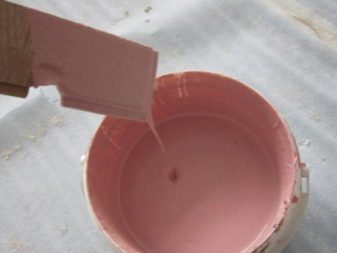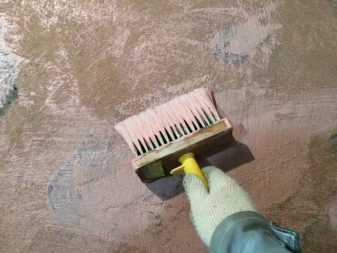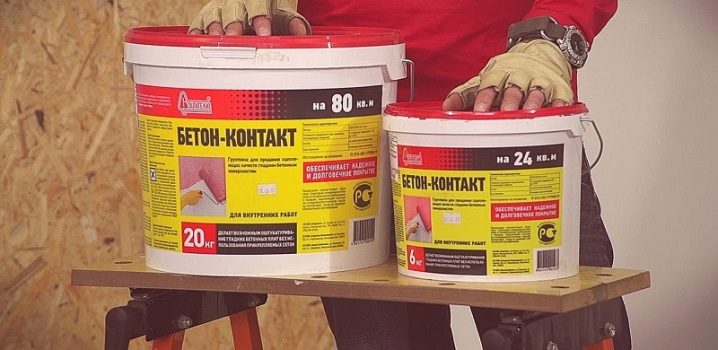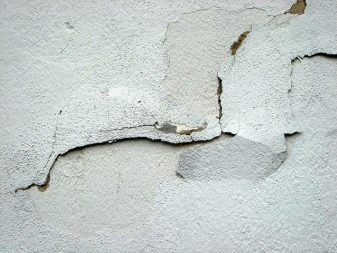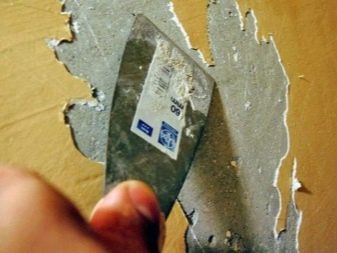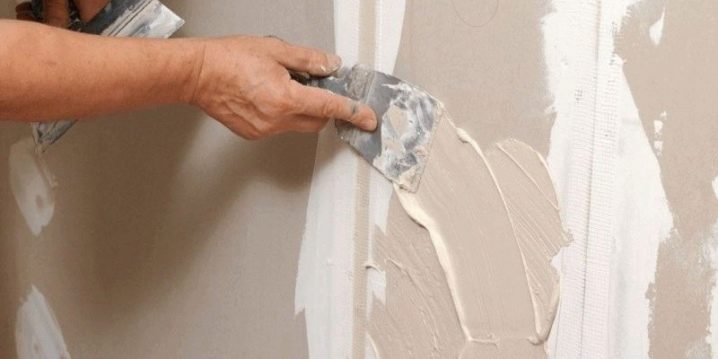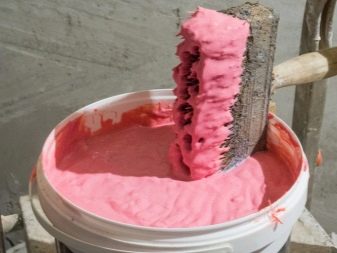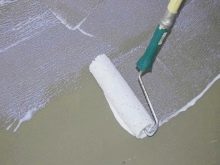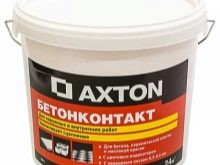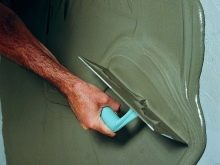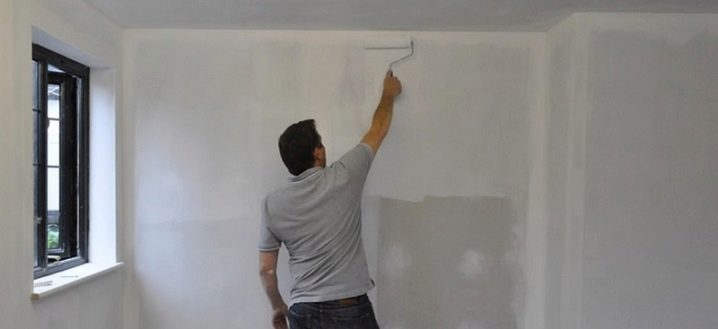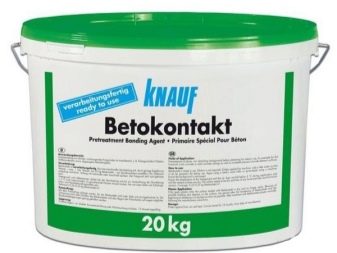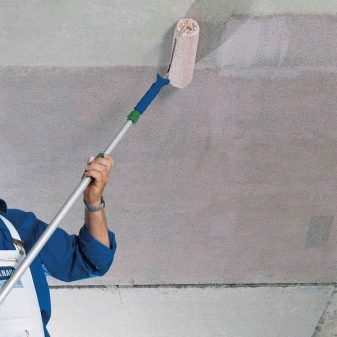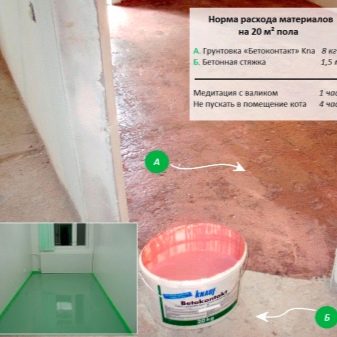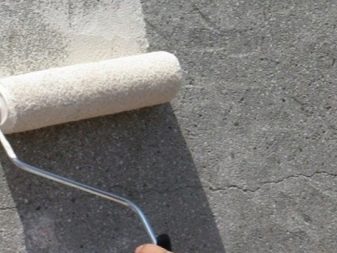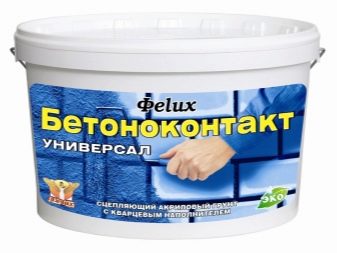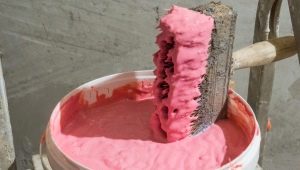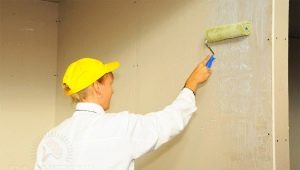How to calculate the consumption of concrete contact per 1 m2?
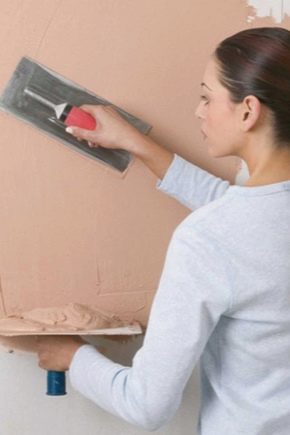
During repair, it is impossible to do without material that contributes to the combination of two absolutely incompatible elements. Concrete contact comes to the rescue in this case, which helps the finishing materials to firmly attach themselves to the wall or to each other. The components for its production are quartz sand, a very strong glue, acrylic. Thanks to this composition, you can get a good adhesion and simplify the process of finishing.
The primer concrete contact will make the surface rougher, and then you can proceed to the processing of the desired material.
The use of this solution is an occupation that requires a lot of attention.There are many nuances that are worth remembering. But without this primer is impossible to do when you need to finish concrete walls or ceilings. Do not forget about the main rules of applying the mixture. And of course, you need to know how to calculate how much primer floors, ceilings, and other surfaces require. This will immediately get the right amount of solution to your area.
Where does it apply?
I must say that due to the characteristics of the primer, it can be used for a wide variety of mixtures. This concrete ceilings, walls, various tiles. In addition, the coating of the building with facade decorative plasters will not be without this material. Absolutely on any surfaces: both inside and outside, concrete contact will successfully cope with the functions assigned to it.
How to calculate?
Primer concrete contact can be applied not only on concrete walls, but also on any other surface. You need to know that there are features of the flow, it can vary depending on the type of surface on which it is applied. For example, in working with concrete walls, he is alone, and with a brick or drywall is completely different.
Separate the surface depending on the parameter such as porosity. So, there are three types of such surfaces.
- Porous - among them brick, concrete with sand and polished. In working with these materials, the consumption of concrete contact per 1 m2 will be about 0.3 - 0.5 kg. In addition, if the surface has a high porosity, then you need to process it with special impregnating materials of deep penetration.
- Medium pores - it can be monolithic concrete, concrete tile or self-leveling floor. Here, the rate per 1 m2 is as follows: 0.2 - 0.35 kg.
- Low porous - for example, ceramic tile, rubbed concrete or paint. For them, it will be enough to use about 0.15 - 0.25 kg of material.
What else does the expense depend on?
If the walls, which will have to work, will have a good absorption of moisture, then the primer will need to use much more. By the way, manufacturers on their packages indicate that 300 grams will be needed per square meter of solution. But in fact, this indicator often does not correspond to the stated, and the rate of concrete contact has its own characteristics.
Norm
In order to obtain information about what the rate of primer, you need to use the so-called probe.To do this, you need to select a square 1x1 meter, as well as a certain amount of mortar that will be applied. It is necessary to weigh the mixture together with the container in which it is located. After that, you can begin to apply concrete contact to the surface. In the process of finishing, we check whether the mixture is firmly held, if something is wrong, fix it.
After the work on the entire square is completed, the solution can be weighed again. The difference between these figures will be the rate of consumption for your surface. It is worth noting that even the fill of this trial square should be smooth and smooth, without any gaps.
If in any place there is not enough solution, it will manifest itself in the shedding of sand and cement. In such a situation, it is better to add another layer, which, as a rule, leaves 20-30 percent less primer.
How to reduce the consumption of the solution?
Since the peculiarity of concrete contact is that its cost is not so great to save and reduce its consumption, it is better not to ask this question at all. The consequences of reducing consumption can lead to the fact that the strength will be much lower, the coating will begin to crack, and in the future it can completely peel off.
When reducing the amount of concrete contact, adhesion will also decrease - the interaction of the base and the new coating, but even this is not the worst. Do not forget that one of the purposes of concrete contact is waterproofing.
Many of the coatings that interact with the primer, made on the basis of gypsum or Portland cement, and, accordingly, they must be diluted with water.
If the water quickly leaves the mixture, the coatings will become dry. This is exactly what a concrete contact does not make, so it’s better to get rid of the idea how to calculate the soil in order to save more.
How to prepare the surface?
In addition to the features of the surface, the consumption of the primer will depend on how well you prepare it before work. First you need to clean the working platform from dust or various kinds of pollution. If there are places that have already begun to flake or crumble, then it is better to deal with them immediately and remove them. The irregularities present must also be covered with plaster.
A feature of concrete contact is that it can not stick to the surface, which will be greasy.If there are such areas, it is better to wash and degrease them, only then proceed. Places where there is paint can be washed with a damp sponge, if this is not possible, it is best to cover them with a conventional primer. This procedure makes it possible to significantly reduce the flow rate, since the soil will fill the places where there are cracks.
After processing is finished, you need to remove small mote, then you can be sure that the concrete contact tightly engages with other materials.
How to apply?
After the package has been opened, the primer needs to be mixed well. The consistency of this solution is somewhat similar to paint, and due to the fact that pigment is injected into it, concrete contact is very clearly visible on the surface. It is better not to apply the primer if the air temperature is below 5 degrees Celsius. This is due to the fact that at lower temperatures humidity can become high. In addition, under these conditions, it cannot be guaranteed that the primer will seize and dry well.
A primer can be applied using a roller, a special brush and a spatula. It is necessary to apply a thin layer of the solution, it is better to take a wide brush for this.After that, you need to leave for some time to allow to dry. Check whether the surface is completely dried, you can use a special iron spatula. One has only to spend them on concrete contact and see if there will be nothing to crumble. It is worth noting that in order to be able to carry out further work, you need to wait at least several hours.
In this case, you can not put off finishing work. The greater the break, the greater the likelihood of dust on the surface, and this leads to a deterioration of adhesion. If after the primer has been applied, more than 48 hours have passed, it is necessary to cover it with a deep penetration primer.
You can cope with this process yourself without calling the construction crew. The main thing is to comply with the technology of application, and so that during application and drying of the concrete contact the temperature regime is stable.
Special features
This material has long been appreciated by builders for a number of its advantages.
- High drying speed, which is important during repair, when you need to do everything as quickly as possible.
- Moisture resistance. This is especially useful for those who do floor screed.
- The service life of such material is 80 years. It is such a time with proper application and compliance with all the rules, according to manufacturers, you can not worry about the full performance of the functions of the primer.
Manufacturers
There are manufacturers of Akvilegiya or Knauf, which have been on the market for quite a long time and produce only high-quality products. Consider a Knauf primer that is popular with customers. This material is used when working with dense surfaces, which have a rather low absorption capacity. It can be:
- compacted concrete;
- reinforced concrete structures;
- plasterboard plates.
Knauf manufacturers have tried to make the material have a high level of alkali resistance. In addition, this solution can be not only the basis for applying wallpaper glue, putty and other mixtures. It is also useful when finishing the base and protects it from various influences.
The features of Knauf are:
- high vapor permeability;
- reduced consumption of finishing materials;
- there is protection against bending and mold;
- possesses dirt-resistant properties.
Manufacturers of 20 kg of packaging Knauf made sure that the buyer was satisfied and returned to this brand more than once. Due to the fact that the banks with a solution are roomy enough, it is not necessary to go shopping several times in search of the necessary primer.
Knowing how to calculate the concrete, and how much primer you need to completely cover the surface, you can get the perfect coating that will last a long time.
Tips and tricks
Choosing concrete contact, you must be guided by several factors. First of all, it should be a manufacturer that has recommended itself. The cost of the material should not be too low compared to the others. In addition, you should carefully examine the expiration date, which is listed on the package.
By the way, if the primer was made more than a year ago, you should abandon its purchase. In addition, you need to pay attention to the homogeneity of the mixture. If it contains lumps, then it is a poor-quality product. And finally, concrete contact cannot be stored at low temperatures, this applies to both the store and the house.
For information on how to use Ceresit CT 19 concrete contact, see the following video.
